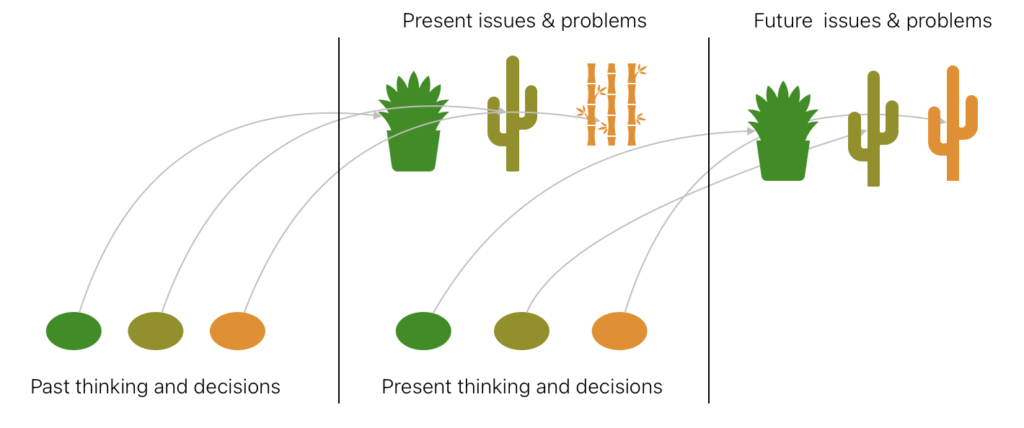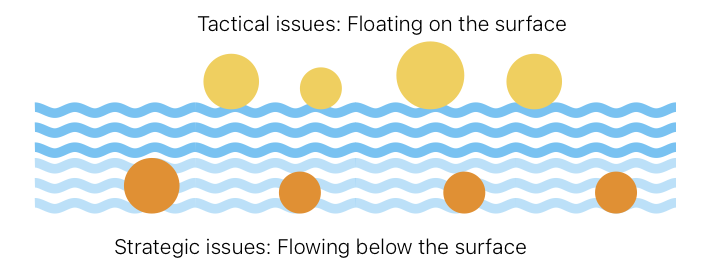Project Management: The Law of Karma
In 1996, Tony Blair, the former Prime Minister of the UK, went to meet then-US President Bill Clinton. After their meeting, as he was leaving, Clinton stopped him and said, “I want to talk to you about something really important.”
Blair got excited, thinking Clinton was about to share some extraordinary piece of geopolitical insight. Instead, Clinton said he wanted to talk about “scheduling.”
“What? Scheduling?” Blair thought.
Clinton cautioned Blair that one of the hardest things for someone running a government was to find time to think strategically and focus on the core priorities. And unless Blair purposefully scheduled “strategy time,” the incessant flow of current events and crises will completely suck all his time and attention.
Years later, Blair realized Clinton had indeed given him a great insight. But is this advice only for Prime Ministers and Presidents?
The plate-full project manager
How applicable is Clinton’s advice for those who lead projects? What impact it could have on a Project Manager whose attention is at the mercy of endless external demands: a calendar full of meetings, hundreds of emails, approvals to be signed off, people chasing for decisions, non-performing contractors, cost escalations, schedule delays, reports to read and prepare, stakeholder management, and so on? In short, a plate-full Project Manager!

How detrimental such a person can be to the success of a project if he gets completely consumed by the urgent day-to-day stuff while losing sight of the important priorities and long-term trends? Who has the power, but doesn’t think strategically and keeps falling for convenient decisions that backfire later? Who can’t distinguish between tactics and strategy? Who is always in reactive mode?
I am sure you must have come across project leaders who are rushing from meeting to meeting, trying to put out fires that never seem to stop but only grow and multiply. I once worked with a Project Manager who was so busy that people had to catch him on his way to or from the toilet for his decisions.
What are the consequences if someone in a leadership position doesn’t step back from the chaos for strategic thinking? Usually, it is more chaos!
Law of Karma
The Law of karma states that we reap what we sow. In other words, every effect has a corresponding cause.
If one connects the dots, projects too are a long chain of causes and effects. The causes of today’s problems–delays, technical mishaps, cost escalations, accidents–can be traced back to past decisions. And while the firefighting goes on in the present, consuming all the attention and time, the seeds of future disasters keep getting sown in real time.
For example, if the vendor for the most critical process equipment is demanding a steep cost increase and giving everyone sleepless nights, the seeds of this mess were sown a long time back when the half-baked specifications were used to place the most critical order. Similarly, if a major conflict in the sequence of the project schedule is now threatening a huge delay, again, it must have a cause in the past. Everything, whether good or bad, has a cause if we carefully trace it back.

This feeling that the Law of Karma is at play in life as well as in projects is truly humbling. The question is: At the project leadership level, are people completely trapped in the current issues and problems that are the results of the past causes, or do they realize that… simultaneously, in real-time, the future is being shaped by their present thinking and decisions?
At the leadership level, a project moves on two tracks: tactical and strategic. Tactical issues float on the surface, visible to everyone, but strategic fish remain invisible to most unless someone steps back to spot them.

The higher the person in the hierarchy of a project, the more the need to periodically step back from the current chaos…to assess what’s going on and spot the issues and trends that no one else is aware of.
The chill-out project manager
I once sat down with the Project Manager of a major multimillion-dollar project and asked him: “With so much happening around you, how do you discern between critical and non-critical issues? Where to invest your time and where not to?
He replied, “While most people sweat on day-to-day issues, I remain fixated on our vision to start the vaccine production three years from now. If I sense any issue affecting that final goal, I get involved; otherwise, I don’t. And also, I don’t meet anyone—including my laptop–for an hour in the morning. That’s my time to listen to some light instrumental music and simply think. I end up ignoring the unimportant and focusing on what matters.”
I don’t think he ever met Clinton, but he knew something: one hour of quiet, disconnected time every morning was the best investment for the future of his project. Incidentally, he was also the most chill guy in the project, always smiling and motivating others.
